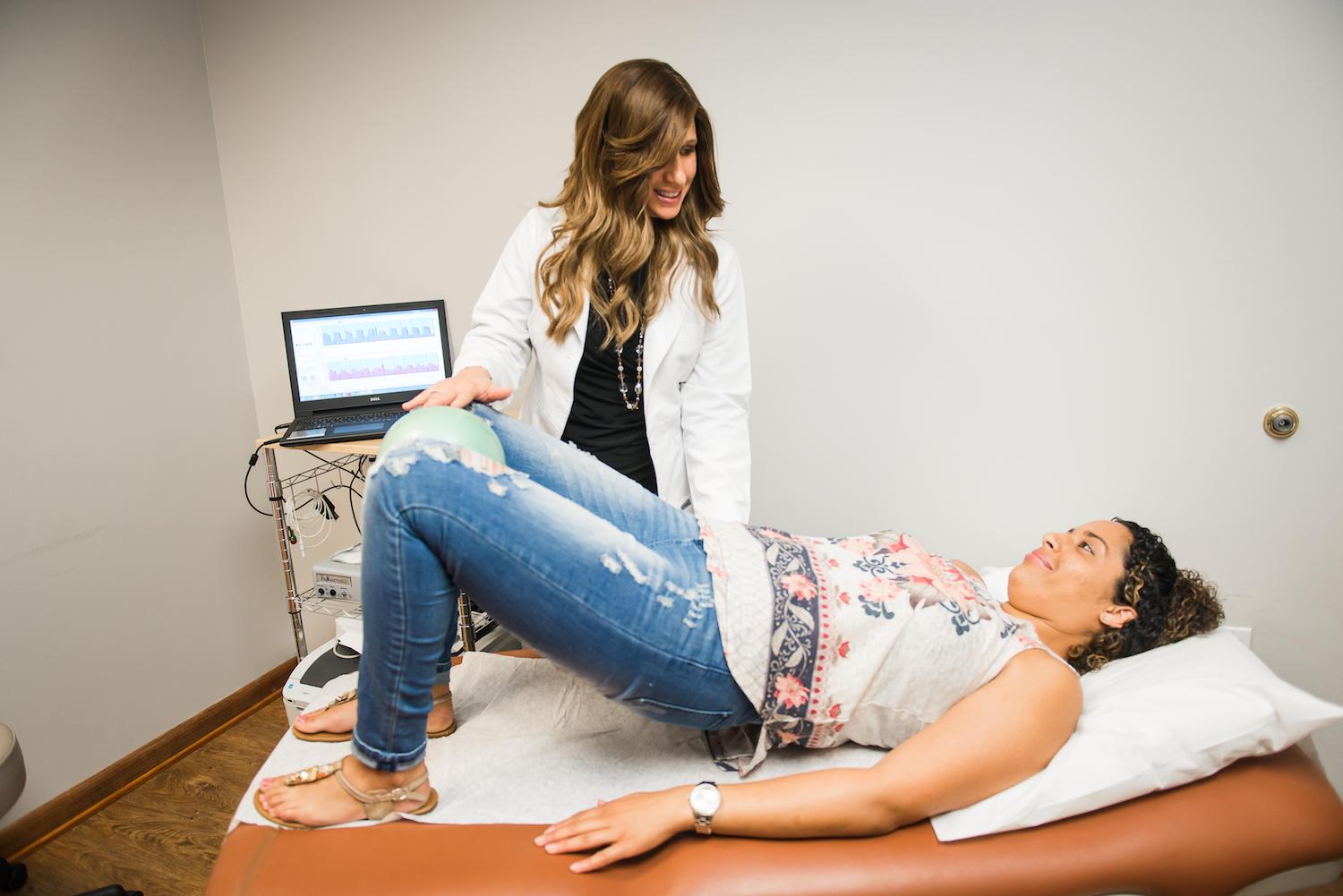
The pelvic floor is a group of muscles that are located at the bottom of the pelvis. These muscles stretch from the pubic bone to the tailbone or coccyx (front to back) and from hip bone to hip bone (side to side). As the floor of the core, these muscles have several important functions: support of the internal organs, conscious control over the bladder and bowels, and sexual function.
Weakness of the pelvic floor is associated with pregnancy and delivery, obesity, genetics, hysterectomy, age, menopause, a sedentary lifestyle, and heavy lifting. Common symptoms of pelvic floor muscle weakness include leakage of urine or stool (incontinence), strong sensations to empty to the bladder, and frequent urination. In addition to poor bladder and bowel control, decreased support of the pelvic floor muscles may cause a prolapse or protrusion of the bladder, bowels, or uterus into the vaginal canal. Women with pelvic organ prolapse may experience pelvic pressure, vaginal pain, a bulge or lump in the vagina, urinary incontinence, stool incontinence, and difficulty emptying the bladder or bowels.
Many women see these changes as natural aspects of aging that cannot be changed; however, there are many treatments available. One of the most innovative and noninvasive treatments is pelvic floor physical therapy. Many women favor physical therapy as treatment because instead of just managing symptoms, it works to restore natural bowel and bladder function.
Depending on the severity of your symptoms, a physical therapist with specialized training in pelvic floor muscle dysfunction can provide the tools to decrease, if not eliminate, your symptoms. Most medical insurance plans will cover this therapy. A pelvic floor physical therapist will perform a musculoskeletal assessment to determine the factors that may be contributing to your pelvic floor disorder. The therapist will provide education on behavioral and dietary changes to help improve your quality of life. Finally, patients will be given an individualized treatment regimen that may include therapeutic exercises (i.e. Kegel’s, core stabilization), manual therapy to address joint or soft tissue abnormalities, and modalities such as electrical stimulation and biofeedback training.
